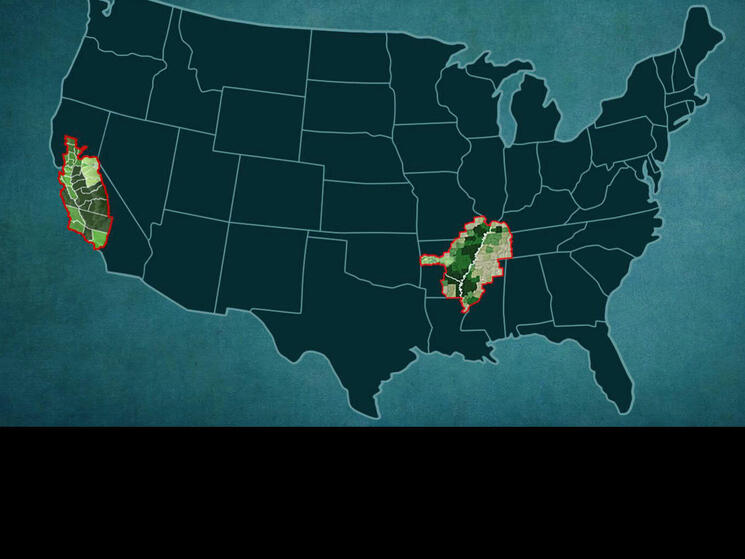
Next California: How We Get There
- Date: 23 July 2020
- Author: Julia Kurnik, director of innovation startups, WWF Markets Institute
As stated in the previous post, a more distributed and resilient food system won’t happen on its own. To enable a future where American food production puts less strain on the environment, is closer to consumers with less waste, and benefits economically depressed areas, WWF’s Markets Institute is looking out to the future.
In the next three years, we will need to focus on the following:
Explore business models. Over the first 12 months, we will explore key business models. We will explore the options of organizing labor at scale to meet the needs of local producers of different crops as well as the ability to provide full time employment for labor. We will also explore the efficacy of creating a centralized processing plant and cold storage over a more distributed system.
Secure market interest. Before farmers begin growing specialty crops, they will need to know that there is market demand for the crops that they will produce. In preliminary discussions with major food companies, there is already interest due to concerns about secure supply chains. The COVID-19 pandemic has heightened concerns about supply. Climate change is also making companies nervous and more interested in resilient supplies. We will conduct deeper analysis and outreach to secure market demand and begin to create a pipeline of companies that are interested in sourcing specialty produce from the Mid-Delta. We will especially look at how contracts can be used by farmers to help finance their working capital needs.
Run a pilot. While continuing to build support on the ground through ongoing outreach to local community groups, farmers markets, churches and social groups, schools and clubs in the area, the post office, and local specialty food buyers, distributors, and retailers, we will complete more detailed economic modeling and risk analysis over the next 12-18 months, after which we would run a pilot over the subsequent 12-18 months. This proof of concept for the general strategy will be invaluable for the next steps in achieving our vision.
In the next 10 years, we must:
Double specialty crop sales from 2020 benchmark. Doubling sales over 10 years will suggest that our vision is on its way to a reality. Following a successful pilot, we expect production to expand in the pilot region and in other parts of the Mid-Delta by 2030. These early results are essential to achieving the full vision by 2050.
Significantly advance processing and distribution capabilities. We will need facilities--converted or created--along with new investments in infrastructure and cold storage to harvest, preserve, process, store, and distribute specialty crops. These investments in the region will position the Mid-Delta for success with value-added processing nearby, as opposed to shipping crops out of the region for freezing, canning, etc. By 2030, we hope to see no more than 5% of all production lost or wasted; with 25% sold locally, another 25% processed with value-added locally, and 50% sold outside of the immediate region.
Accelerate technology. In the next 10 years we need investments in technology, such as through AgLaunch’s “Next California” Challenge, to reduce manual agricultural labor and make robotics more available and affordable. While these advances will not be complete by 2030, the gains to the region will already be significant. We expect this to be reflected in the employment and earnings data as robotic production, management, and repair leads to new, more desirable jobs and the use of robotics leads to higher earnings for farmers.
Employ new business models. Some combination of joint ventures, employee stock option programs, long-term contracts, social impact bonds, and green bonds will be needed to promote equity. Some of these mechanisms, such as long-term contracts, will demonstrate feedback and results sooner than others. Social impact bonds, for example, can be in place 10 years from now, but still early in the process.
Gain policy support. Federal, state, and local government must lower or remove row crop subsidies, expand crop insurance to include specialty crops, invest in R&D, increase demand, and expand financial innovation to target women and minorities and small-scale, value-added production. These changes will not happen overnight, but advances in crop subsidies and insurance are essential to the long-term success of the project.
Previous posts in this series:
Future post in this series: